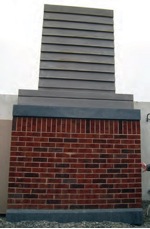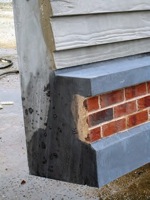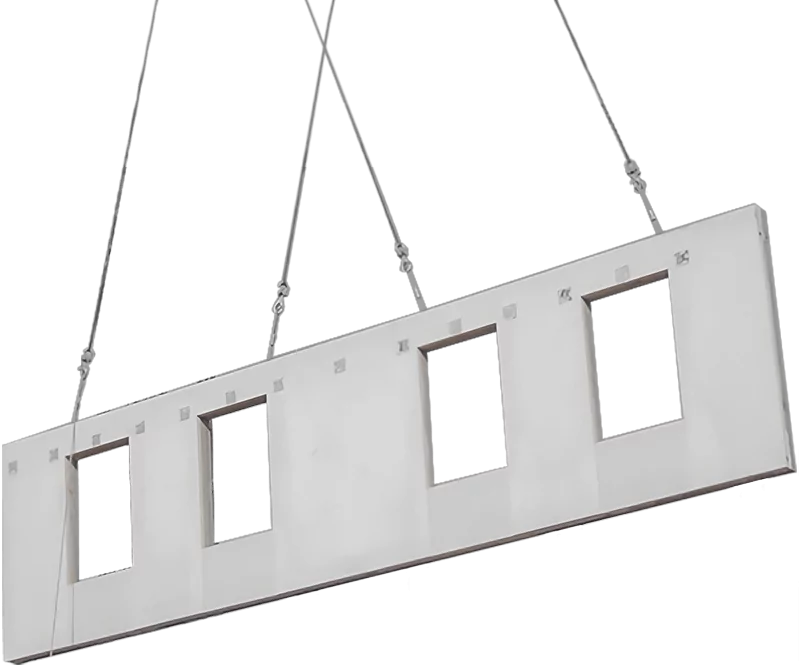(Case Study transcribed from Ascent Magazine reprint by Craig Shutt)
The new Martha Jefferson Hospital on the outskirts of Charlottesville, Va, lies atop a hill in the sightline of Monticello, Thomas Jefferson’s historic plantation In such august company, designers wanted the new hospital to blend with the lo cal styles, featuring masonry and lap board siding with a slate roof. Those materials were specified to clad the hospital-and they were replicated on the adjacent precast concrete parking structure, creating unique replication challenges that showcased the mate rial’s aesthetic versatility.
“The parking structure provided a unique challenge to match the hospital’s traditional materials in precast concrete;’ says David Plank, associate principal and project architect at Kahler Slater. “When we design parking structures, precast concrete is al ways our first choice, because it offers the best value in terms of cost, durability, and speed of construction. We designed the hospital with the look we wanted, and we had enough faith in the local precasters that they could replicate the materials we used.”
The buildings, part of the Peter Jefferson office complex, provided a new home for the hospital, which moved from downtown Charlottesville and prides itself on its historic preservation. Matching the parking structure to the new hospital’s design in pre cast concrete could be achieved, but optimizing the panels to provide the precise look with the variety of mate rials required proved challenging, says Jim Lyons, project manager at The Shockey Precast Group, the precaster on the project.
Total Precast Structure
The structure features a total precast concrete structural system consisting of double tees, beams, columns, walls, stairs, and architectural spandrels. The structure itself was relatively easy to design, measuring three bays wide and six stories tall to provide the needed 765 spaces in the approximately 250,000-square foot rectangular building. But achieving the appearance needed for each panel required careful attention to detail.
Surrounded in the complex by buildings featuring facades with brick and dark gray cast stone, the parking structure was designed to feature a dark brown wood siding look (achieved with formliners) as well as embedded cast stone and brick features. Brick was used primarily always our first choice, because it offers the best value in terms of cost, durability, and speed of construction.

Upon arrival, the panels were picked from the truck in the position in which they were being placed on the frame. Other components, including the 207,000 square feet of double tees and the stair and elevator panels, were delivered on traditional trucks and staged at a nearby location for erection as needed.
The panels had cast-in-place plates embedded into them, and they were connected to the foundation using splice sleeves, rather than setting the panels onto the plates. “The goal was to allow the stacked panels to act as one unit,” Lyons explains. In part, this was done because the crane was limited in its maneuverability, requiring it to swing over two bays to locate some panels. The crane was placed in an outer bay and performed the erection from that spot.
“The general contractor did an excellent job with staging the area and providing access for a difficult process,” Lyons says. “We had a steady stream of trucks going into the site and coming back out quickly. It all went fairly smoothly.”
The finished parking structure blends beautifully and seamlessly with the architecture of the adjacent hospital and other buildings. The structure connects to the hospital, with a dropoff point at the front that leads to the hospital lobby and directs drivers around to the parking entrance.
“The owner was very pleased that all of the finishes on the hospital could be applied to a precast concrete struc- ture,” Plank says. “It creates a light, open look that enhances the patient experience as they arrive and depart.”
Lyons agrees. “Everyone was very pleased with the results. We did a lot of things they thought couldn’t be done. We’re very proud of the work, because it looks beautiful. While I can’t say this was the easiest project Shockey has ever completed, I’m glad to be able to say we could handle the complexity and challenges beyond even our own expectations.”
For more information on these or other projects, visit www.pci.org/ascent.
PROJECT SPOTLIGHT
Martha Jefferson Hospital Parking Structure
Location: Charlottesville, Va.
Project Type: Parking structure
Size: Approximately 250,000 square feet
Designer: Kahler Slater, Milwaukee, Wis.
Owner: Martha Jefferson Hospital, Charlottesville, Va. Structural Engineer: GRAEF, Milwaukee, Wis. Contractor: MA. Mortenson, Brookfield, Wis.
PCI-Certified Precaster: The Shockey Precast Group, Winchester, Va.
Precast Components: Total-precast concrete structural system, including double tees, beams, columns, walls, stairs, and architectural spandrels
Download this Case study as a pdf file: Martha Jefferson Hospital PS_Ascent reprint

